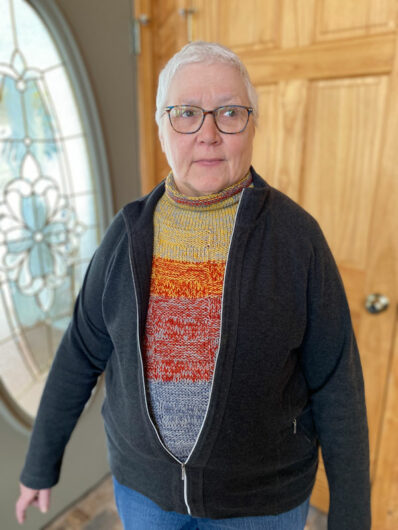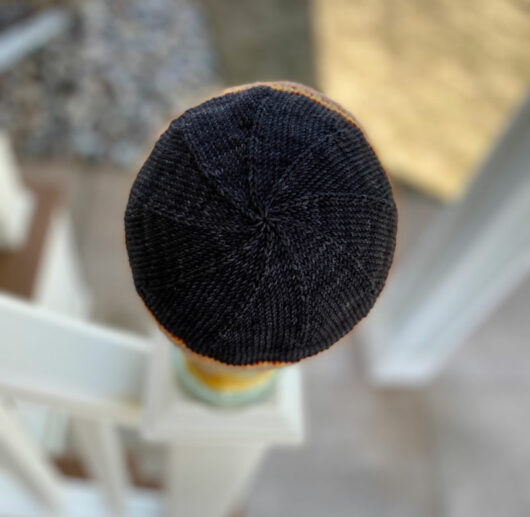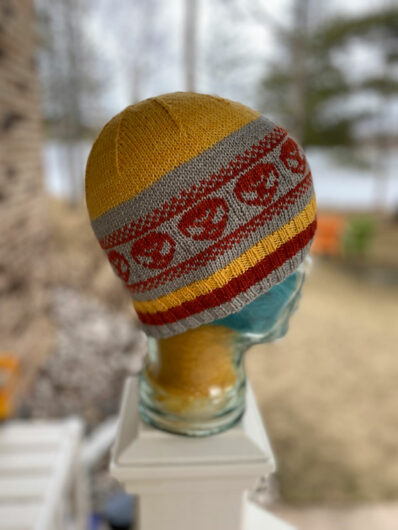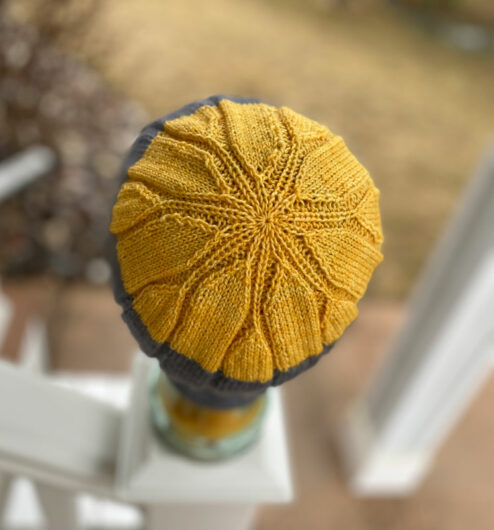Recently I noticed that I’ve been knitting a lot of red hats. Not that it’s been red red red all in a row. But I looked over my “knits4blog” file and found an abundance of red hats that I’d not yet featured.
This first one is the great Wooly Wormhead’s freebie, Meret, left free to be a beanie instead of a beret. That’s just a matter of not blocking it as a beret. My Meret is knit in Malabrigo Rios in the Cereza colorway. It’s a rich red with undertones of almost black. My apologies if that sounds wine-connoisseur-silly (“woody, with a hint of apricot and mushrooms”). But then lots of us are yarn connoisseurs in this robust knitting universe.
I was a smidge disappointed that the crown decreases turned out rather porous. It’s not beyond the pale though that sometimes we might need an air conditioned beanie.
Next up is yet another version of Jesie Ostermiller’s Portsmouth Beanie. This is such an excellent unisex hat pattern. This time I knit it in Anzula’s For Better or Worsted. 80% merino, 10% nylon, and 10% cashmere. This is the Watermelon colorway. I’m pretty sure it’s the 10% cashmere that keeps me reaching for this hat when I’m looking for cozy.
I’m frugal enough that I very much enjoy knitting multiples of purchased patterns. Six dollars for three hats–with likely more in the future–would please even my rubber-band-saving grandmother.
What would especially tickle Gram is that I knit this version in yarn I frogged from a prior, less successful, hat. I unraveled the hat, wound the yarn onto my swift, tied it in a few places, and then steamed it. That did an excellent job of unkinking the yarn and saved me the trouble of washing and reskeining it.
Here’s another version of Galina Shemchuk’s excellent freebie, Just a Hat. It’s a somewhat new hat pattern that’s drawn a lot of attention with 450 project pages in just a few years. There’s a lot to like about the pattern. Unisex. Very forgiving size-wise. Tidy crown decreases. And free.
I knit my Just a Hat in Malabrigo Rios using the Desert Rose colorway. This hat seems to look especially nice knit in a yarn, like Rios, with shading and depth to make the hat’s furrows furrow just right.
This next hat is Hill Country Hat by Clara Parks, the only bulky weight in this post. It’s part of her “Knitters’ Book of Wool” but the pattern’s been released as a freebie.
I’ve knit Hill Country (ahem) eight times and already posted this hat’s predecessors. If you search on this blog you’ll find them all and be able to see the interesting stitch choices that make this bulky-weight a standout. What makes my latest version different is my unusual yarn choice: Lana Grossa’s Fusione. If you want to give it a try in this yarn, I’ll just wish you luck because it’s discontinued. Personally, I liked its 30% cotton, 26% alpaca, 25% wool, 19% nylon mix, for some purposes anyway. Very cozy. But I didn’t like it’s-time-to-take-out-a-mortgage price. And then I bumped into a huge markdown on the stuff and I was all in. This Hill Country wiped out my stash though.
Admittedly, not the best choice if you’re looking for stitch definition. But it will keep some head totally warm.
Last up is another Maria Socha beauty: Rioska. Mine is knit in Sugar Bush Yarn’s Bold, unfortunately another discontinued yarn. It’s a worsted weight with excellent stitch definition. I’ve often knit with solid shades of Bold. This was the first time I used a variegated shade: Rose Garden. I was concerned that the mock cable details would be overwhelmed by a too busy yarn. But I’ve decided that the result is excellent.
So pretty, including Socha’s trademark well-planned crown decreases.








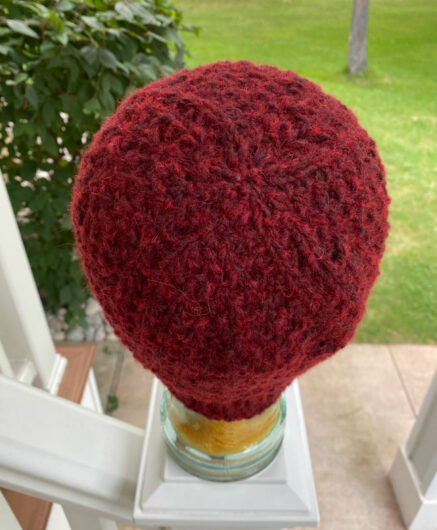

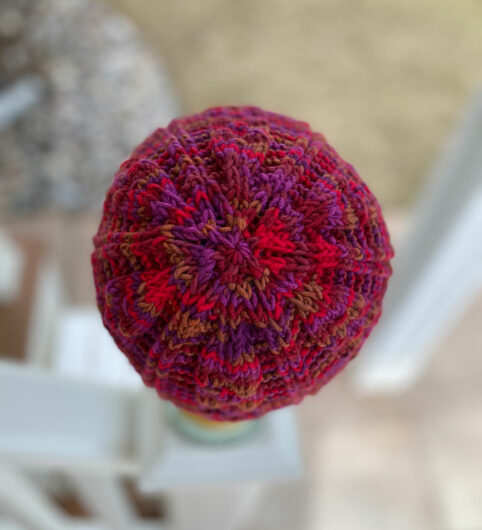
 This is my
This is my 

